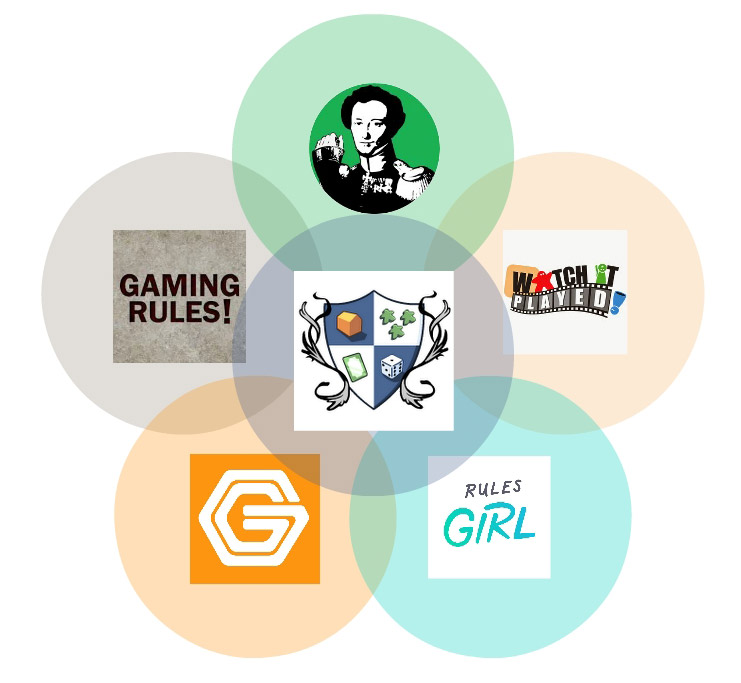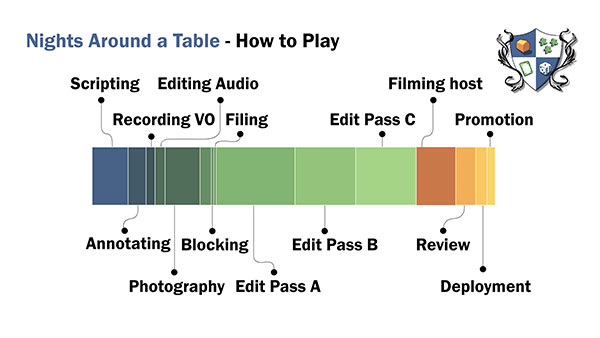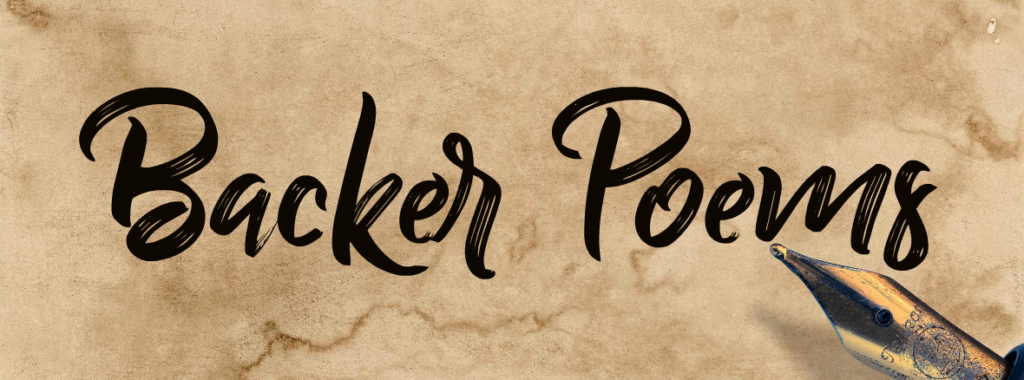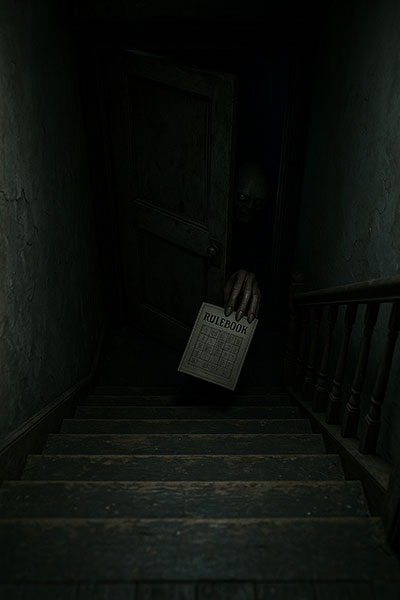TL;DR: Publishers buy into the myth that one instructional video for their board game is enough. The truth is that YouTube audiences are much more siloed than you think, and i have the receipts to prove it.
More Than a Handful (of videos) is a Waste
i recently emailed a publisher, requesting access to a repository of print-ready graphics from their game so that i could produce a good-looking signature Nights Around a Table How to Play video for their game, as a goodwill gesture.
The response from the publisher was interesting, and i’d heard it before: “Oh — such-and-such channel already produced a How to Play video for our game, so we don’t really need another.”
i saw this attitude espoused by some viewers in the early days of Nights Around a Table. i remember feeling absolutely deflated when i worked very hard on a certain video, only to see someone comment, seemingly angrily, “Why did you waste your time making this? So-and-So already made a How to Play video for it. You should stick to making videos for expansions that haven’t been explained yet.”
It was temtping to take that bait and become the strictly “How to play [obscure expansion for popular board game] Guy.” But if i had done that, i wouldn’t be experiencing the lavish lifestyle of fast cars and loose women that top-earning board game YouTubers like myself enjoy.
Pictured: 90s-era Ryan Henson Creighton aboard the Nights Around a Table yacht with his “board game betties”
Instead, i stuck to my guns and kept making How to Play videos — even when someone else had already produced one for a particular game. Even when that was the “official” How to Play video, paid for by the publisher. And even when i was months, or years, late to the game.
But Ryan: why?
Doin’ it for the ‘Gram
For startsies, it’s important to understand how YouTube works. It’s like a newborn baby with no sense of object permanence. If someone made a How to Play video for a game 3 years ago, and i launched mine yesterday, YouTube is going to recommend my video on search, usually one or two slots below the years-old vid. When a viewer is presented with two options, a few factors entice people to click my video over another. Those factors include (but are not limited to):
- thumbnail appeal
- runtime (the video with the shorter runtime generally wins the click)
- brand recognition (for good or for ill – see below)
Add to all of this: the reason i make a How to Play video when a game already has one is that i think — nay, i know — that i can make a better video than the existing one. And if i didn’t think that, then what am i even doing here?
That NAaT Difference
If you watch the channel, you may have already noticed a few features that make Nights Around a Table videos a cut above:
- Setup at the end. Nobody clicked the video to watch someone set up a board game. You clicked a video titled “How to play,” not “How to set up.” Setup is only really useful if you’ve just cracked the shrink on the thing and are sitting there ready to play it right now. The majority of people watching these videos are not in that position. i include setup instructions in my videos as a concession, but i make sure to bury them at the end of my videos. YouTube videos live or die by their first few seconds, and if my first few seconds have me saying such riveting things as “put the coins next to the board,” the thing is dead in the water.
- Hands-free-ness. Forget the fact that my ugly, hairy, mangled man-hands are usually marred by cat scratches, nibbled fingernails, and dermatographic scrawling: when i watch other instructional videos, i’m struck by how little i can see of the board because some host’s intrusive paws are blocking my view. Nights Around a Table videos keep the hands out of it via a combination of stop motion animation, digital asset animation (hence why i request high quality assets from publishers), and traced callout boxes that highlight different spots on the board so that viewers know exactly where to look.
- Humour. Board gaming is supposed to be an enjoyable hobby, right? Learning the rules is often the most painful part, but these videos don’t have to play like university lectures. Where possible, i try to slip in witty asides and light-hearted jabs about rules and components to keep viewers interested as they absorb the rules.
i provide this roadmap to my clients to help them visualize which stage of the process their production is in
So when people search “How to play [game title]” and they see two promising thumbnails pop up: one from me and one from the other guy, not everyone’s gonna click the other guy. They know the difference between that host and Ryan, and it doesn’t matter how official or longstanding the other video is. They wanna hear it from me.
Everyone’s a Critic
But sometimes they don’t want to hear it from me, because they hate my guts! Sometimes, they DO wanna hear it from the other guy. Or from some hypothetical third person who teaches the game with puppets. Or from someone who promises to do a complete teach in a few minutes. Maybe people prefer that?
The point is that not all hosts, teaching styles, production values, or approaches suit all tastes. i’ve been told by some YouTube commenters that they always check to see if i’ve done a How to Play video for a certain game first (and they’re disappointed to find i haven’t). Many people swear by Rodney Smith’s welcoming approach at Watch it Played. Still others favour Paul Grogan’s teach-as-you-play style at Gaming Rules. Lots of viewers have had it up to here with us middle-aged white guys, and they want Monique and Naveen at Before You Play to take them through it. Some just want the gist from expert synopsizers like Jarrod Carmichael at Three Minute Board Games, or when he’s too long-winded, they turn to Luiza — AKA the Rules Girl — who can get it all done in seven and a half seconds.
While i won’t suggest that the viewers who watch the Rules Girl never watch Nights Around a Table or vice versa, my thesis here is that by and large, she and i have two completely different audiences. As a publisher, if you’re thinking that a single instructional video from just one of these people covers all your bases, then respectfully, you’re wrong!
But just how wrong are you? By how much does the Venn diagram between channels overlap (or not)?

It’s practically impossible to know. But i do have one real-world case study to present to you that supplies some surprising data.
Case Study: Dead Reckoning
To help publishers get more bang for their buck, i partnered with Rahdo from Rahdo Runs Through to produce How to Play videos. One of these was for AEG’s Dead Reckoning. The video premiered on Rahdo’s channel, got a big marketing push, and was embedded on the game’s Kickstarter page. Rahdo had 100k subscribers; i had 20k. The video performed well: 15000 views.
Six months later, I reposted the exact same video — new intro/outro, same content — on my own channel. No Kickstarter promo, no publisher boost.
It also hit 15,000 views.
Let that sink in.
Ryan Does what Rahdon’t
So what’s going on?
Some important caveats: each view does not necessarily represent a unique viewer, but for simplicity let’s suppose it does. Also, a single view doesn’t represent someone watching a video end-to-end. There’s a huge drop-off in the first moments of any video, and very few viewers stick it out to the end — especially for videos with longer runtimes like this 30 minute Dead Reckoning video. It’s very possible that viewers who had watched the video on Rahdo’s channel six months earlier clicked the thumbnail on my channel, and then realized a few seconds in that it was the same video, and bailed. That still counts as a view.
Given those concessions, there are only a few ways to explain an identical view count across channels:
- Everyone who watched the video on Rahdo’s channel re-watched it on mine (unlikely).
- Some viewers overlapped, but many didn’t (plausible).
- The audiences were almost entirely distinct (also plausible).
While we can’t know the exact overlap, one thing is clear: posting the same video on a different channel doubled the exposure. If both channels had the same audience, that wouldn’t happen.
And that’s the point. Viewers who really like Rahdo and what he has to offer don’t necessarily like my approach, and vice versa. Some viewers may not enjoy the Rules Girl’s brevity, or Paul Grogan’s no-nonsense delivery, or Rodney Smith’s rippling pectorals and soft but firm hands that you just want to have grip you in his strong embrace and hold you down, softly kissing your cheeks and running his luscious tongue through your unkempt moustache. Different people like different things.
Conclusion: Audience Overlap is a Myth
The board game YouTube audience is not a monlith. Many viewers love Tom Vasel’s one-two teach/review combo punch at The Dice Tower, while others much prefer the “just the facts” stance of hosts like Jon Cox at Getting Games. Some people can’t stand Jeff Kornberg at The Dragon’s Tomb, while other people want him to do that moustache thing to them. Sometimes all those viewers with all those different preferences are the same people. Very often, they are not.
It’s tribalism, baby. We are in camps. Sometimes we send envoys between camps. Sometimes we intermarry. Sometimes we are impregnated by the sweet loving tenderness of certain Canadian channel hosts, and tiny little new YouTube viewers hatch out of our facial hair. It all depends! But to think that your bases are completely covered by having a single instructional video on one channel denies the diversity and taste and preferences of a large viewer base who wouldn’t watch another video by Such-and-Such host if you paid them.
And then, there’s the crowd that doesn’t even prefer learn from YouTube videos to begin with. They’re our creepy cousins in this whole thing. They live in the basement.
“i prefer the purity of the written ruuuuulessss….”
In sum: yes, the tapestry of players is as unique and patchworked as YouTube hosts’ approaches to teaching a board game. There’s room enough for everyone, and far from being a pointless waste of effort, having multiple instructional videos exist for a game will only help more people learn to play and enjoy it.









